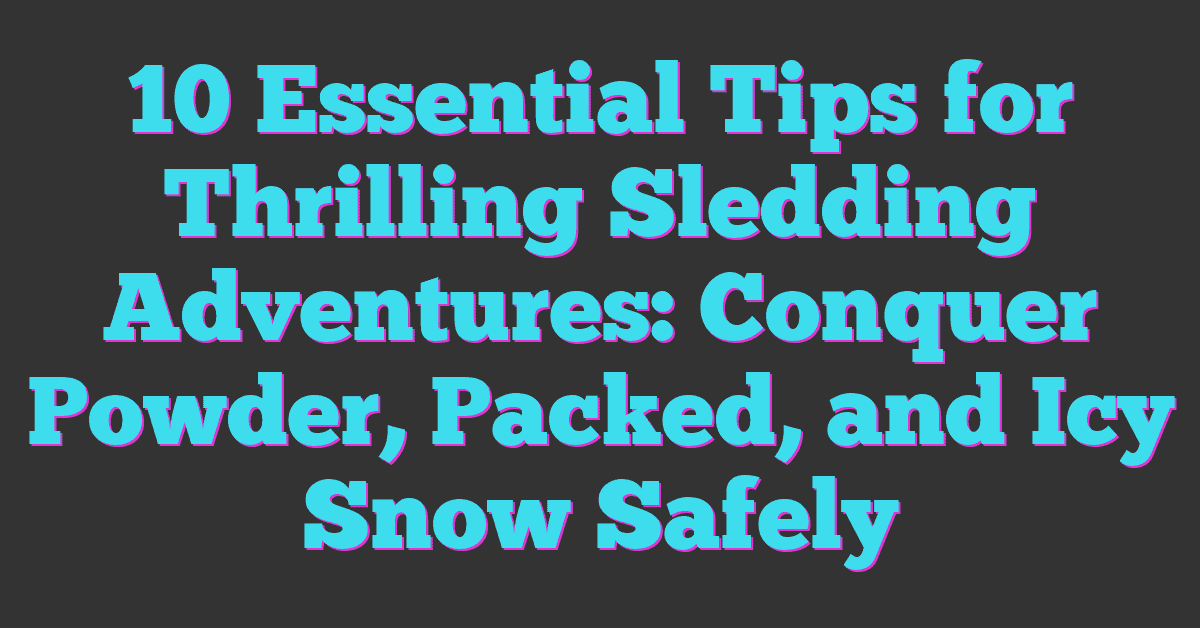Freestyle skiing is all about creativity and expression on the slopes. As I glide through the air, performing tricks and spins, I can’t help but feel a rush of adrenaline. Whether you’re a seasoned pro or just starting out, there’s something magical about mastering those jaw-dropping moves that make this sport so captivating.

Overview of Freestyle Skiing
Freestyle skiing combines athletic skill with artistic expression. It invites skiers to perform dynamic tricks on various features like jumps, rails, and halfpipes, pushing boundaries of what’s possible on snow. With its roots stemming from traditional alpine skiing, freestyle skiing has evolved into an exhilarating discipline, appealing to skiers of all levels.
Freestyle moves vary widely, from simple jumps to complex spins and flips. Beginners often start with basic aerials, while seasoned skiers might tackle double corks or backflips. Each move requires practice and precision. Mastering freestyle skiing helps develop not only technical skills but also creativity and confidence.
Competitions celebrate creativity, pushing skiers to showcase unique styles and technical prowess. Events like slopestyle, aerials, and mogul skiing highlight different skill sets, allowing skiers to find their niche. The competitive drive fuels progression in the sport, inspiring me to try new tricks while enjoying the thrill of the mountain.
Freestyle skiing fosters a sense of community. Skiers share tips and celebrate each other’s achievements. Whether hitting a terrain park or navigating natural features, the camaraderie enhances the experience. Engaging with the freestyle skiing community consistently inspires me to elevate my skills and enjoy the sport even more.
Types of Freestyle Skiing Moves
Freestyle skiing includes a variety of exciting moves that showcase creativity and technical skills. Understanding these moves enhances the experience on the slopes and encourages new skiers to challenge themselves. Below, I’ve outlined the three primary types of freestyle skiing moves: jumps, spins, and grabs.
Jumps
Jumps are one of the most thrilling aspects of freestyle skiing. They involve launching off a takeoff ramp or natural snow feature to perform aerial tricks. Common jump styles include:
- Table Jumps: These jumps feature a flat landing area, allowing for a safer experience.
- Backcountry Jumps: Off a natural feature, these jumps invite creativity but require caution.
- Kickers: Man-made structures can vary in size, offering different levels of difficulty.
Performing well on jumps requires practice and confidence. Always check the landing area before committing to a trick.
Spins
Spins add an extra layer of flair to jumps. They involve rotating the body while airborne. Key spin elements include:
- 180s: A half turn that can be done frontside or backside.
- 360s: A full rotation, showcasing control and style mid-air.
- 540s and 720s: Advanced spins that require a combination of speed and technique.
Timing and body positioning are crucial for successful spins. A well-executed spin impresses both judges in competitions and fellow skiers.
Grabs
Grabs involve holding onto the ski during a jump, creating a visually appealing move. Here are some popular grabs:
- Mute Grab: Grabbing the ski’s outside edge with the opposite hand.
- Safety Grab: Holding the ski in the middle with the same-side hand.
- Nose Grab: Grabbing the front tip of the ski, offering a unique look in the air.
Adding grabs to jumps and spins enhances the overall style of a trick. Practicing grabs helps develop comfort and flair, making any jump stand out.
Techniques for Executing Moves
Executing freestyle skiing moves involves precise techniques that enhance performance and safety. Mastering these techniques elevates your confidence on the slopes and allows for creative expression.
Proper Stance and Posture
Maintaining proper stance and posture is crucial for executing freestyle skiing moves effectively. Stand with your feet shoulder-width apart, knees slightly bent, and weight evenly distributed on both skis. Keep your upper body relaxed and aligned, facing down the slope. This position enhances balance and control. When executing a jump, prepare by bending your knees deeper to generate force from your legs. As you take off, extend your legs fully for lift, keeping your core engaged for stability in the air.
Timing and Coordination
Timing and coordination play vital roles in performing sophisticated freestyle moves. Anticipate the jump by gauging distance and speed, adjusting your approach accordingly. When you reach the takeoff point, initiate your jump by extending your legs and pulling your knees up toward your chest to prepare for tricks. Coordinate your hand movements with your legs to maintain balance in the air. For spins, start the rotation as you leave the ramp, using your shoulders to guide the motion. Practice these elements regularly to enhance your overall execution and fluidity.
Safety Considerations
Safety in freestyle skiing is paramount, especially when tackling jumps and tricks. I always make sure to wear my helmet and goggles to protect against potential falls. Proper padding can significantly reduce the risk of injury, so I opt for wrist guards and knee pads when pushing my limits.
I maintain a healthy respect for the terrain and conditions. Assessing the snow quality and the features on the slope helps prevent accidents. I avoid attempting moves beyond my skill level and prioritize gradual progression. Starting with smaller jumps and basic tricks builds confidence while allowing room for improvement.
Proper warm-ups play a crucial role. I dedicate time to stretching, ensuring my muscles are ready for action. Flexibility helps in injury prevention and enhances my performance. I also stay hydrated and take breaks to avoid fatigue, as tiredness can lead to lapses in judgment.
Additionally, I ski with a buddy when possible. Skiing with friends ensures there’s someone to spot during attempts. We share tips and provide support, which fosters confidence and enhances safety. If I venture into more challenging areas, I always inform someone of my plans, no matter how experienced I am.
Lastly, being aware of my surroundings is essential. I pay attention to other skiers and snowboarders, maintaining a safe distance to avoid collisions. Understanding the rules of the terrain park also keeps me and others safe while having fun on the slopes.
Conclusion
Freestyle skiing is more than just a sport; it’s a thrilling journey of self-expression and creativity. I love how each trick I learn adds a new layer to my skiing experience and allows me to showcase my personality on the slopes.
As I continue to explore jumps spins and grabs I find that every moment spent practicing not only builds my skills but also deepens my connection to the skiing community. Whether you’re just starting out or looking to refine your technique remember to have fun and embrace the challenges along the way.
So gear up hit the slopes and let your creativity flow. There’s a whole world of freestyle skiing waiting for you to discover!
















